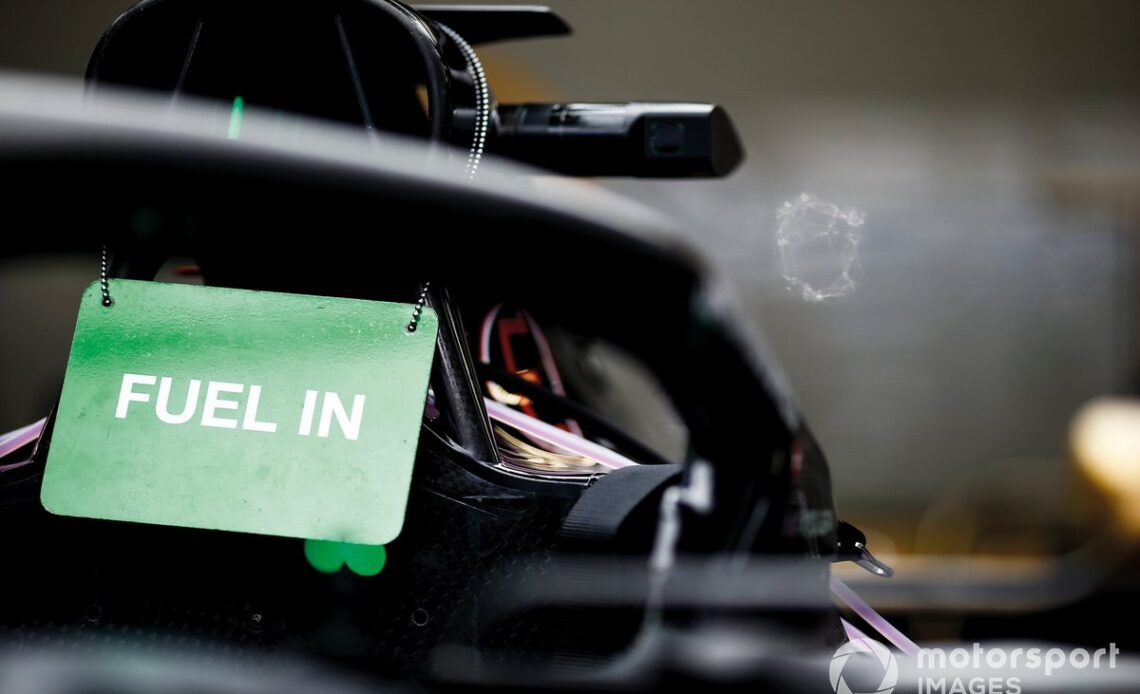As part of its push to hit a net carbon zero target by 2030, F1 is introducing all-new engines that will run of sustainable fuel when the current rules formula ends after 2025.
The new fuels are being manufactured using captured carbon dioxide or carbon monoxide together with hydrogen obtained from sustainable electricity sources, plus second and third generation biofuels made using sustainable (non-food) biomass or municipal waste.
The move away from fossil fuels will trigger a change in the oxygen level of fuels, and this could have an impact on how quickly fires rage in the event of an accident.
F1’s chief technical officer Pat Symonds admitted that the switch of fuels would require some thought to be given to fresh safety standards in the series.
Asked by Motorsport.com if there would be a need for safety equipment to face new homologation standards, Symonds said: “Yes it does in many areas, because with the fuel we’re proposing in Formula 1 for 2026, we are allowing up to 20% of oxygenates of ethanol-type fuels.
“So the way you fight a fire is slightly different. You have different chemicals, as indeed you do these days for electrical fires. Compatibility of materials also needs to be checked.
“During the [Bahrain] test, I had a meeting with one of the subcontractors, who supplies a lot of the seals and rubber components that are used in all the current F1 cars, talking about this very thing. It’s not a big problem, but it’s one that you just need to make sure you understand.”
GPR AUG 21 Fuels 1
F1’s race wear suppliers are also eager to better understand any changes they may need to make to driver overalls, underwear and gloves as the result of any new safety standards.
Maurizio Sicco, consultant for Puma’s motorsport activities, said in Bahrain that he hoped the FIA would move quickly to define potential changes.
“At the end of the story, they have to take care, analyse the potential danger and release a new homologation,” he said.
“They are late on this, but we hope they can study and develop a new recommendation so we can adopt everything in time.”
He added: “We have to push the FIA to identify the real danger. With the new fuel, they have to be very, very accurate on the risk assessment, and then release a new homologation.”
Click Here to Read the Full Original Article at Motorsport.com – Formula 1 – Stories…

